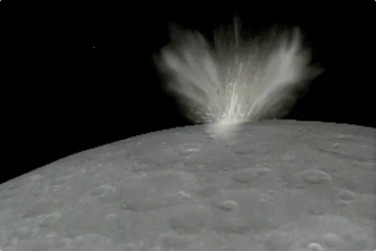The moon has hardly any atmosphere, just the thinnest traces of gas, so it has no regular weathering processes and no water to erode features on its surface. It also lacks the continent-sized movement geoscientists call plate tectonics. So, the face of the moon is very, very old.
It's covered by craters that remind us of the violent early days of our solar system, when bombardment was commonplace. And it carries the evidence of the many impacts since.
With no atmosphere to circulate and moderate the heat of the sun, the moon experiences dramatic temperature differences between its day side and its night side. During the lunar day (which lasts about two Earth weeks!) temperatures can reach 130 degrees Celsius (266 Fahrenheit) while the night side may be as cold as minus 180 degrees Celsius (minus 292 Fahrenheit).
The moon is geologically inactive and almost certainly biologically dead. But recent findings by the Clementine probe and the Lunar Prospector spacecraft indicate that millions of tons of water ice may be hiding from the sun in the deep-shadowed craters near the moon's poles.
